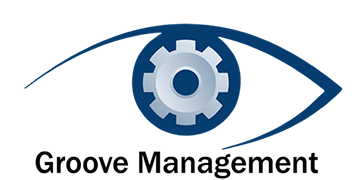Innovation: Is That Actually A Drone Selfie?
The tie between innovation and the culture set by leadership
Some say creating innovative products or services is like catching lightning in a bottle. I disagree. I believe innovation is a skill that can be developed and taught. I run several leadership development programs for clients. One of my favorite modules in the cohort program that I facilitate is on innovation.
We begin by differentiating design from invention. IDEO the renowned design firm gives an easy to understand example to differentiate design from invention. Dental floss is an invention, but the smart case it comes in that lets you pull off just the right amount of floss is a design improvement. Design is the marriage between form and function. Understanding this distinction helps individuals to recognize that so much of the innovation we see around us is really just redesigns of existing products or services. As pre-work for the program each participant is asked to complete the task listed below:
Having done this activity several times the results are always quite similar. People choose to highlight products like Apple's iWatch, the Ring Doorbell, Amazon Echo, Oculus Rift and services like Uber, Postmates, and Blue Apron. These products and services seem innovative, yet so simple. The one common thread between the products and services that my program participants always identify is that they are technology based, meaning they are either digital products or rely upon an app. It is actually quite difficult to identify a product or service launched in the past five years that is not digital or that does not rely upon the internet.
This exploration by the class highlights a few keys to innovation:
Opportunities to innovate are all around us
It is the most obvious ideas that tend to catch on
Today's innovations merge products and services with new technologies
Being innovative requires a culture that is not afraid of risk and failure
Effective leadership for creating a culture of innovation requires providing employees with the freedom necessary to be creative
The photo at the top of this article was taken by the DJI Mavic Pro quadcopter. Remote control helicopters and planes have been around for years, but marrying them with GPS, HD cameras, stabilization and smartphones is something new. This is an innovation. We see examples like this all around. In the program we looked at the electric skateboard as another example of an innovation. I believe that lithium ion batteries are one of the most important technological advancements we have seen in recent years. They enable smartphones to last all day in a slim package, for impact wrenches and drills to be cordless, for medical equipment to be free from cables, for electric skateboards to run 20 miles on a single charge and for so many other innovative products to exist.
Discussing the electric skateboard as an innovative product
The most important conversations in our innovation workshop centers around creating a culture that fosters innovation. While some see innovation as an art form there is rigor to the process. Design thinking concepts help make order out of the chaos that starts the innovation process.
"The biggest inhibitor to an organization being innovative is the management practices. Most companies are averse to risk and innovation requires embracing risk."
There is a paradox here that I refer to as the paradox of size. The larger an organization the more risk averse they become. The most innovative products tend to come from startups that have a different appetite for risk. Larger established companies tend to acquire innovations versus developing them in house. The acquisition shifts the culture of the innovative startup and in most cases the larger company's risk averse culture prevails. I have seen it first hand with several clients and companies that I used to work for.
The last question on the homework slide: "What does it tell you about leadership?" is very important. As we develop the next generation of leaders we need to instill in them a curiosity and an appetite for risk.
Can you think of innovative products that don't rely on technology that have been developed in the past five years? Love to hear about them in the comments section below.




